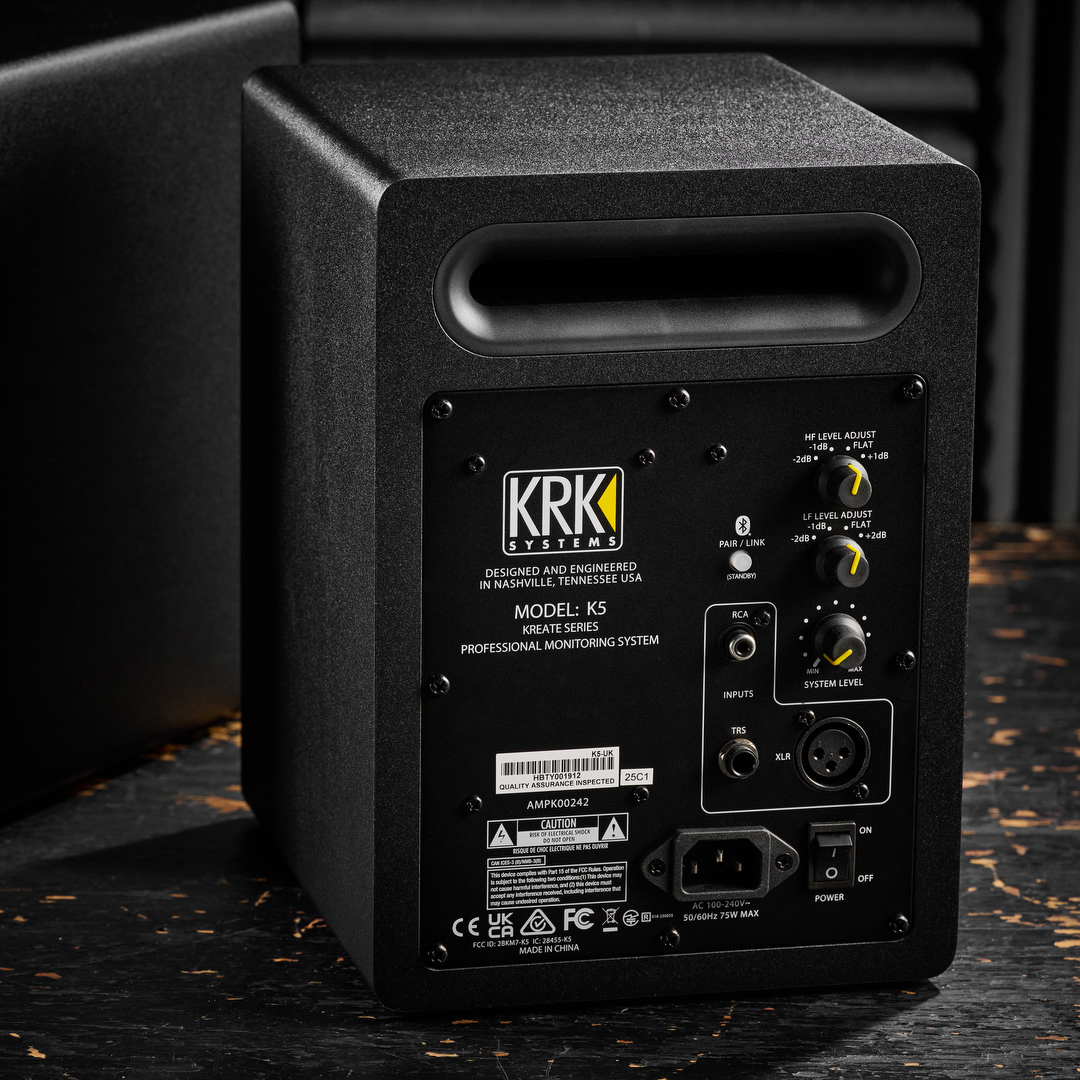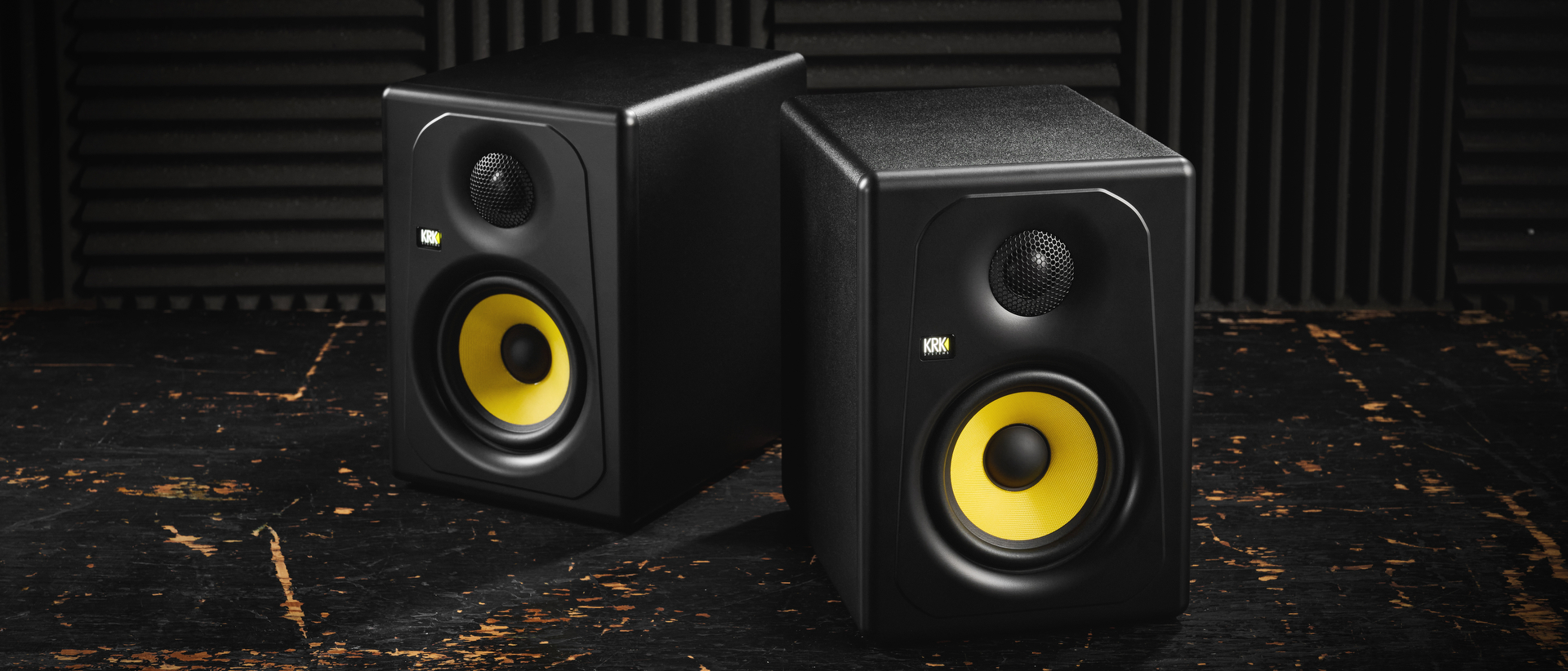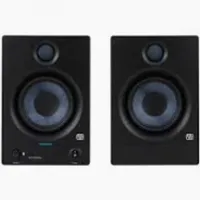MusicRadar Verdict
KRK’s latest mid-sized nearfields are competitively priced and deliver flexible connectivity and reliable sonics from impressively compact enclosures.
Pros
- +
Very compact enclosure
- +
Great value
- +
Flexible choice of inputs
- +
Reliable sound delivery
Cons
- -
EQ tweaking options a bit limited
MusicRadar's got your back
What is it?
KRK Systems has earned a reputation as one the most consistent studio monitor manufacturers, with its instantly recognisable yellow cone monitors regularly seen across the globe. Both its Rokit and V Series ranges have gradually developed over time alongside a solid selection of subwoofers and headphones. Meanwhile in recent times the GoAux series has provided two ultra portable designs.
Kreate is KRK’s new competitively priced range and features three models - Kreate 3, Kreate 5 and Kreate 8. The Kreate 3s are available as a pair (£169), and the Kreate 5 and Kreate 8 individually (£149 and £229 per speaker respectively).
The Kreate 5 we have for review is a 2-way rear ported powered monitor. It features a 5” LF unit and 1” HF unit. Rear audio connectivity is both balanced (TRS or XLR) and unbalanced (RCA phono). The Kreate 5 also supports Bluetooth, and you’ll find the blue backlit pairing button just above the RCA inputs.
Kreate 5 is powered by regular mains with the illuminated KRK logo indicating they are powered up. Each unit includes twin onboard amps - Class D for LF and Class A/B for HF - with precision limiters. On the back panel you’ll find the System Level control alongside HF Level (+1dB, flat, -1dB, -2dB) and LF Level (+2dB, flat, -1dB, -2dB) adjustment.
Unlike some of the smaller monitors, such as KRK’s own GoAux, each Kreate 5 unit is self-contained, with the compact size making them suitable for a more modest surround setups. That said, with no mounting threads, you’ll need to choose clamp-style wall mounts.

Performance
Kreate K5 is a very straightforward and traditional design. What’s more, with the bass port on the back, it’s very compact - 26cm tall, including the 4mm factory fitted foam isolation pad. It’s also good to see a proper selection of inputs, and worth noting, you can use the unbalanced input and one of the balanced connections simultaneously. Once paired, the Bluetooth connection can also be used simultaneously, so you can stream from a mobile device without upsetting your main studio feed. Handy.
The EQ options are simple to use with the notched knobs making matching each side very easy, even if you’re reaching over the speakers to adjust them. Setting the level meanwhile is assisted by the detented knob. Although there are no specified EQ frequencies, the frequency curve indicates changes from about 2kHz upwards (HF) to 300Hz downwards (LF). Either way, the changes are gentle, and don’t attempt the more drastic room and desk correction we sometimes see.
Want all the hottest music and gear news, reviews, deals, features and more, direct to your inbox? Sign up here.

With the EQ flat, our first impressions are very positive. There’s a slight overall sweetening, which is more noticeable in the high frequencies. And the mid-range is not as upfront as many monitors. This achieves an overall tonality that sits between a traditional monitor and a listening-tuned hi-fi design. Meanwhile, the smooth tweeter waveguides help deliver a broad sweet spot. Taking a look at the response curve reveals a small dip centred on 3kHz, a small boost centred on about 15kHz, and a gradual tail off in the lows with the -10dB point just below 50Hz. In use, we noticed the low frequency tail off from about 56Hz downwards.
The rear bass port design means the Kreate 5 works best a little distance away from the back wall. The EQ does offer some help in reducing low-frequency build-up from corners and walls, but is not drastic. Even so, we positioned them about 30cm from the rear wall (not a corner) and found the -1dB LF setting sufficed. The HF EQ, meanwhile, allows some tweaking for taste.

Verdict
Overall, it would be great if the Kreate 5 had a little more LF EQ flexibility, even though it’s not a deal breaker. If you’re after an honest pair of compact, affordable monitors, these are easy to set up, offer flexible connectivity and work very well for production and more general listening duties.
Alternatives
These very compact monitors performed well in testing and offer features similar to those of the Kreate 5.
<p><strong>Read the full <a href="https://www.musicradar.com/reviews/presonus-eris-e5-bt"><strong>PreSonus Eris 5BT reviewNo Bluetooth option, but solid performance from this well-established Yamaha monitor.
<p><strong>Read the full <a href="https://www.musicradar.com/news/yamaha-hs5-powered-studio-monitor-review"><strong>Yamaha HS5 reviewSpecifications
Price | £149 each |
Key features | Configuration: 2-way rear ported bi-amped monitor Enclosure: PVC vinyl wrapped MDF with Polystyrene baffle faceplate LF Driver: 5” woven glass composite with ferrite magnet HF Driver: 1” textile dome with neodymium magnet Crossover Frequency: 2.56kHz Frequency Response: 58Hz to 40kHz +/-3dB LF Frequency range (-10dB): 46Hz LF amp: Class D 45 Watts HF amp: Class A/B 15 Watts Total Dynamic Power: 128 Watts Maximum SPL: 105dB (@1m) Analogue Input: balanced (XLR or ¼” TRS), unbalanced (RCA phono) Bluetooth Input: Bluetooth v 5.3 EQ: High 10kHz shelf +/- 2dB, 3.5kHz peak +/- 1dB, Low 60Hz shelf +2, -3dB, 200Hz -2dB peak |
Dimensions | 259(h) x 185(w) x 229(d) mm |
Weight | 4.3kg |
Contact |
Jon is a London based platinum award winning mixer, producer, composer and club remixer with a diverse CV that spans dance, pop, rock and music for media. He’s also a long term contributor to MusicRadar's music technology tutorials and reviews. Whether working alone or collaborating he usually handles final mixdowns, so you’ll also find MusicRadar peppered with his handy mixing tips.
You must confirm your public display name before commenting
Please logout and then login again, you will then be prompted to enter your display name.



